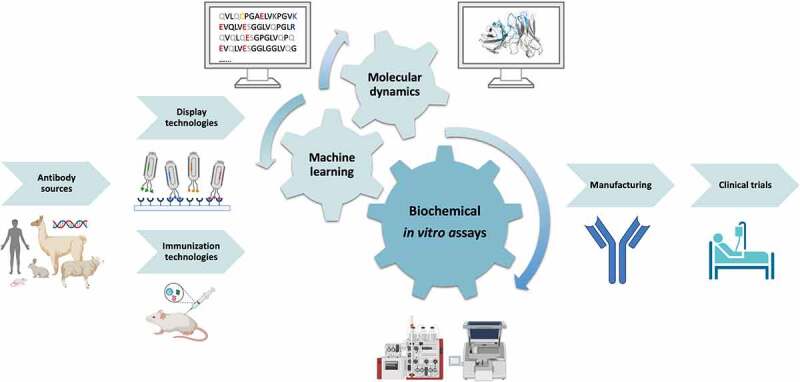Figure 1.

Schematic overview of antibody sources, discovery strategies, in vitro assays, and in silico methods used to assess developability properties during the development of biologics. Antibodies can be of either natural or synthetic origin and are typically discovered using various display technologies or immunization strategies, or a combination of these. In addition, antibodies can be derived from patient populations. During the development of antibodies, various in vitro assays in combination with in silico methods for machine learning and molecular dynamics can be applied to assess the antibodies’ developability properties and select candidates with the best developability profile.
